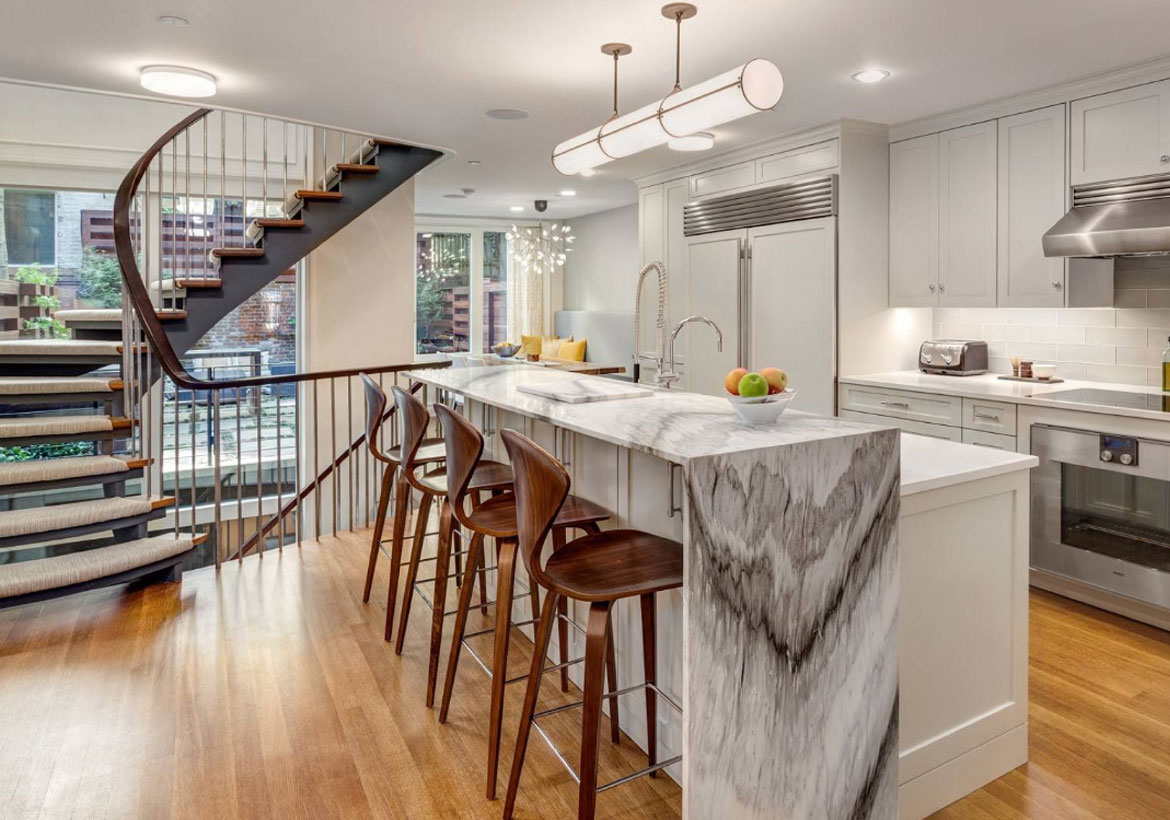

While creating a waterfall countertop with most veined materials is impractical and expensive, it’s a breeze with quartz. Waterfall Countertop Design Ideas Waterfall Countertop Edge You Don’t Have to Avoid Patterns Altogether They’re primarily suited towards modern and contemporary kitchen designs and may look out of place in a traditional space. Doesn’t Work with Every ThemeĪs jaw-dropping as waterfall countertops are, they don’t necessarily work with every kitchen design theme. But you’ll also pay as much as $2,000 for the CNC fabrication process. You’ll of course spend more on materials for a waterfall countertop island. A good waterfall countertop is going to cost you. It’s very unlikely that you’d scratch a waterfall countertop made from quartz. Quartz, on the other hand, is a very resilient material.

Belt buckles, utensils, and chairs all pose risks. Durabilityīase cabinets made from wood can scratch very easily. It can be the centerpiece of any modern or contemporary kitchen. Waterfall Countertop Pros and Cons Pros Stunning BeautyĪ waterfall countertop edge is stunningly beautiful. While the upfront cost for a quartz waterfall countertop is by no means cheap (if it is, you should be suspicious), you’ll save money in the long run.

You also need to worry about resealing the surface as often as twice annually. With waterfall granite countertops, your costs don’t end there. Expect to pay as much as an extra $2,000 for this process. This produces mitered edges that fit together seamlessly. Manufacturers will cut the slab precisely with a computer numerical control laser cutter (CNC). Of course, you’ll need more material - but the cost per square foot is typically the same.įabrication costs are where waterfall countertops pull far ahead. These costs are no different than what you’d pay for the materials and installation of a conventional countertop. Installation will run you as much as $100 per square foot. Stone slabs (including quartz) for a waterfall countertop cost from $40 to $100 and beyond per square foot. While waterfall granite countertops are porous and expensive to maintain, quartz requires no maintenance. We can flawlessly match veining or exclude it altogether to create a waterfall countertop island that looks like one cohesive material.īeyond installation, quartz countertop benefits make engineered stone a much more practical solution for day-to-day life as well. Our experts at Caesarstone combine the natural beauty of quartz with resins and pigments to produce a versatile material. Mismatched veining will ruin the cascading waterfall effect.īecause of this, most designers now use quartz countertops to create the waterfall look. This is difficult to do with a waterfall countertop island made from wood, marble, granite, or any other material that contains natural veining. You want the countertop to look like it’s made from one continuous material. The unique profile of a waterfall countertop edge means you need to choose a surface material carefully.

What Materials Can You Use for Waterfall Countertops? This design element creates a very elegant countertop that enhances a modern kitchen design. In the picture above, observe how the countertop material flows beyond the top surface and down to the floor. With this design, the countertop has vertically-extending sides that reach to the floor. While this can certainly be beautiful in its own right, a waterfall countertop edge creates a more dramatic look. What Are Waterfall Countertops?Ĭonventional countertops consist of a slab resting atop base cabinets or an island. We’ll also provide some waterfall countertop ideas to inspire your next kitchen design. In this post, we’ll tell you everything you need to know about it. The waterfall countertop design is among the most popular countertop trends at the moment.


 0 kommentar(er)
0 kommentar(er)
